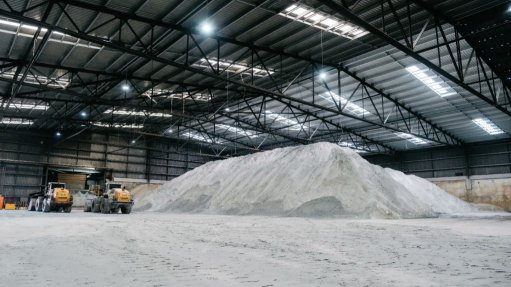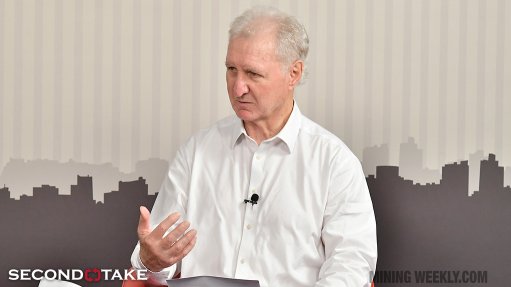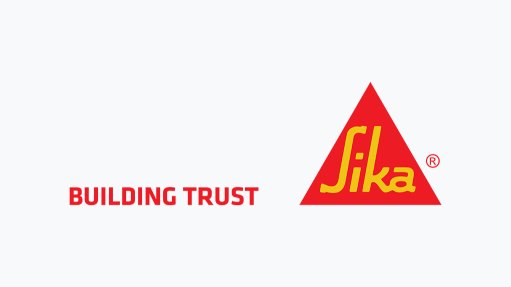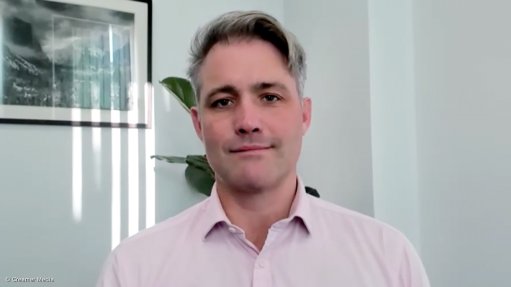Better resources, collaboration required to tackle mine security as illegal mining spikes

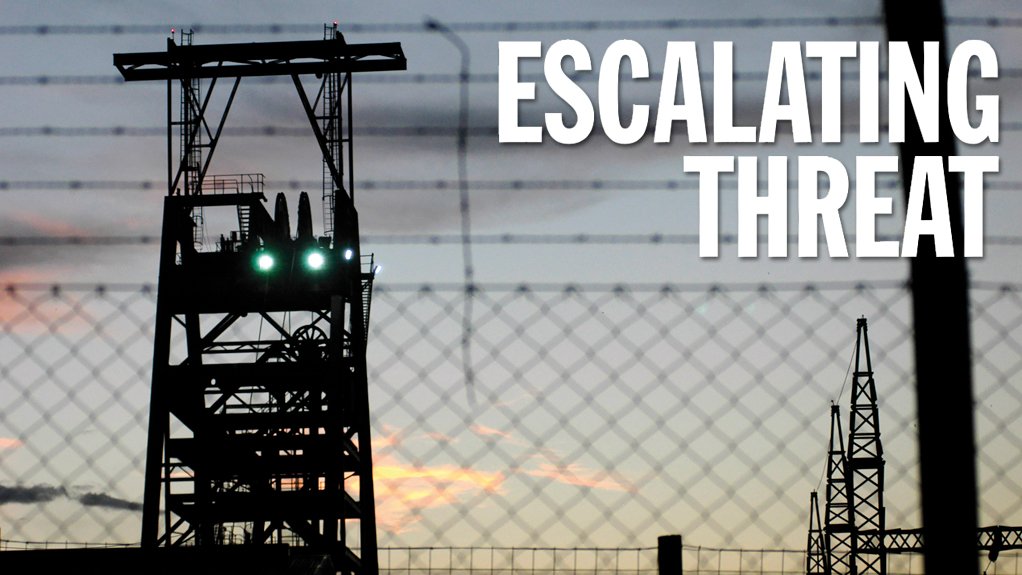
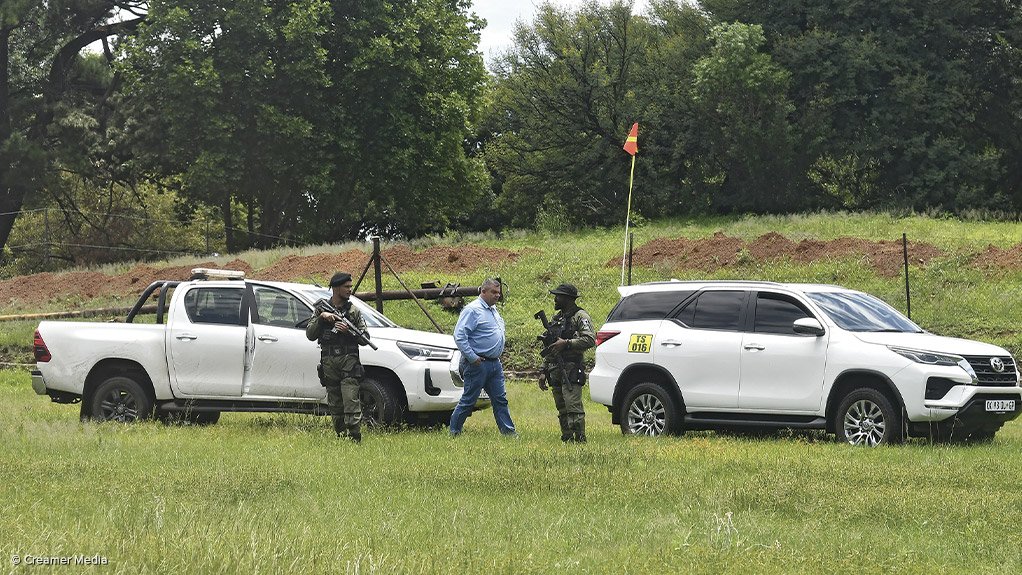
FIRE WITH FIRE There is an escalation in the number and type of firearms and ammunition seized from illegal miners, including semiautomatic rifles, hand grenades and explosives
Photo by Creamer Media Photographer Donna Slater
Illegal mining has grown in scale and complexity, forcing mine security personnel and law enforcement to adapt as traditional security measures become obsolete.
Additionally, the sophistication of illegal mining syndicates requires an exponential increase in cooperation and collaboration among mines, private security companies, law enforcement, the South Africa Revenue Service (Sars), third-party suppliers and various government departments. It also requires a willingness to commit far more resources to tackling the problem.
During the two-day second yearly Mine Security conference, hosted by events company Pinpoint Stewards in June, Directorate for Priority Crime Investigation (DPCI) North West serious organised crime provincial commander Brigadier Hennie Flynn explained that illegal mining is an “escalating global threat”.
He cited a session of the Commission for Crime Prevention and Criminal Justice in Vienna, Austria, in May this year, where several countries emphasised that the “theft and subsequent transnational smuggling of precious metals”, especially gold, is surging.
Representatives from Brazil, Mauritania, Chad, Burkina Faso, Niger, Mali, Ghana, Peru, Sudan, the Democratic Republic of Congo and Paraguay all voiced concerns about the proliferation of illegal mining.
Moreover, he noted that illegal mining activities are closely associated with funding terrorists and extremist groups and other illicit flows. Slave labour, human trafficking, land degradation and deforestation, in addition to the adverse impact on government and business revenue, and thus the long-term sustainability of mines, are also associated with illegal mining.
Flynn suggested that the current socioeconomic context – high levels of unemployment, corruption, complicity within affected communities, as well as poor economic outcomes in many countries – facilitates an environment where illegal mining and illicit economies thrive.
“The most effective way to mitigate the threat is to address all levels within the criminal value chain simultaneously.”
To that end, an issue that has emerged of late is a breakdown in communication between refineries and precious metals producers.
Flynn said that the dearth of early-warning intelligence reports from international refineries had had a detrimental impact on the prevention and detection of, specifically, platinum laundering. He commented that international industry organisations should help reignite the processes through which refineries provide reports to producers.
“This will greatly assist mines in backtracking the platinum’s source of origin and determining the modus operandi used to smuggle it out of Africa. It would also help identify emerging smuggling routes and the national role-players involved in the smuggling and theft of the commodity from South Africa.”
He noted that bulk platinum material is typically smuggled from South Africa to Mozambique, where it is packaged and flown into the Eurozone. Material is also occasionally flown out directly from South Africa, with Flynn noting that the DPCI had intercepted several “misrepresented” consignments at OR Tambo International Airport in recent months.
In terms of gold, he cited the VAT Scam, in which – as reported by investigative media outfit amaBhungane last year – gold suppliers allegedly illegally smelted Krugerrands and illicit gold into bars and claimed that the bars were made using scrap gold from jewellery. This enabled them to fraudulently claim VAT refunds after the gold was exported.
Flynn pointed out that Sars has implemented controls that have been successful in limiting the effectiveness of this specific scam; however, illicit gold from neighbouring countries still finds its way into South Africa. It is seemingly just accepted that some local refineries are using the veil of the second- hand gold industry to, in essence, legitimise illicit gold, selling it to larger refineries which form part of the ‘legitimate’ global supply chain.
Further, in addition to the theft of precious metals, Flynn noted that there has been a notable increase in the theft of chromite ore.
He cited an investigation into a case where R200-million worth of chrome was stolen and transported to Asia before law enforcement intervened. Various role-players were implicated, including landowners, financiers and third parties such as the earthmoving equipment rental company.
He also reported an escalation in the number and type of firearms and ammunition seized from illegal miners, including semiautomatic rifles, hand grenades and explosives.
He cited an operation where the DPCI, in collaboration with mine security, arrested 87 accused people who were in possession of 11 firearms, including assault rifles, and close to 4 000 rounds of ammunition.
“It shows us the extent of their activities and their capabilities to fight off law enforcement . . . we managed to detain them and, ultimately, they were convicted and sentenced to an effective 696 years on aggravated robbery.”
In a different operation, the DPCI arrested 20 individuals as well as one buyer, recovering 14 AK-47s, two shotguns, seven hunting rifles and close to 6 000 rounds of ammunition.
Another conference presenter, University of Pretoria Department of Social Work and Criminology Professor Christiaan Bezuidenhout, noted that it was clear that illegal mining syndicates are extremely well resourced, and that the situation is becoming untenable, especially when considering the crime rate in South Africa in general.
“It’s said that the South African Police Service (SAPS) has 190 000 staff. And to be very conservative, [about] 50 000 are just civilians: mechanics, receptionists and so on.”
When considering the civilian staff component, absenteeism, sick leave and those under investigation for corruption, Bezuidenhout estimated that, at any given time, there are roughly “60 000 police officers meant to police a population of roughly 60-million”, which works out to a ratio of 1:1 000.
The United Nations’ recommended police-to-citizen ratio is 1: 220.
Africa Check, in April, stated that, based on SAPS’s 2021/22 annual report and Statistics South Africa’s midyear population estimates, there is one police officer for every 424 people (1:424). However, unlike Bezuidenhout, it did not attempt to account for absenteeism or corruption.
Further, as Bezuidenhout pointed out, “policing occurs seven days a week, 24 hours a day. SAPS uses it total numbers to calculate the ratio, which is incorrect. One should calculate the ratio during a shift using the number of operational police officers to provide a more accurate picture".
Nevertheless, it is evident that SAPS is understaffed and, therefore, limited in the extent to which it can assist mine security in combating illegal mining.
Procurement Mafia, Copper Syndicates
Anglo American security GM Wayne Hackart noted in his presentation that, aside from the more conventional theft of ore by illegal miners, the other pressing threat is the procurement mafia.
He commented that, over the last five years, the procurement mafia has perfected the manipulation of corporate responsibility and enterprise development initiatives to drive extorted procurement programmes.
He cited the “blur” between social economic hardship and the procurement mafia, commenting that, “in giving in to the procurement mafia, we are not adding value to the economy, or to communities – we’re just making one person rich for doing nothing”.
Hackart suggested that, if left unaddressed, the procurement mafia is “going to become one of the single biggest threats to operations; one of the biggest drivers of conflict between businesses and local communities”.
He proposed that companies re-examine procurement strategies and policies to try to reduce the number of loopholes that can be exploited. He also suggested that mine security re-evaluate their strategies to attempt to address the procurement mafia, rather than “passing it off as a procurement issue”.
“We need to work on integration . . . in terms of our function as security. How are we roping in the supply chain, finance controls, procurement policies, social performance, and where is the integration of . . . synergies to start meaningfully addressing more complex loss-prevention areas?”
Another operational and security threat, the theft of copper cables, has moved from disparate “hand-to-mouth” operations to “extremely well-organised, well-structured, financed, dangerous, multimillion-rand syndicates”.
Sibanye-Stillwater South African platinum group metal operations protection services senior manager Marthinus Taljaard noted that these syndicates tend to target the mine outcrop to gain access to underground operations.
His presentation outlined that, in his experience, there is significant collusion between syndicates, mine security and production personnel, as syndicates have knowledge of underground operations and many of the suspects are apprehended while in possession of mine security radios.
Taljaard noted that Sibanye’s five-pillar security approach has a keen focus on understanding the syndicates, which they have established through investigation and interviews with accused people.
Generally, copper syndicate leaders would fund the operations and have access to scrap metal dealers. They also have recruiters, incline diggers, workers who collect the stolen copper, and team leaders, who act as “the syndicate leader’s right hand” underground.
The teams are coordinated and equipped with two-way radios and homemade explosives. Moreover, in some instances, the syndicates’ access holes can be spread across a distance of up to 50 km.
“Underground, a base is established with groups of between 20 and 40 individuals. And across a mine operation there can be a total of 10 to 15 groups underground at any given point in time. The base is usually established in nonproduction areas.”
What typically happens is that the substation will be targeted and stripped, with the theft generally occurring in the evening over the weekend.
Taljaard noted that the mine has analysed information on previous breeches to help predict where to deploy security staff and how to disrupt the criminal activities.
Further, the mine is collaborating with SAPS and the Department of Mineral Resources and Energy (DMRE) to implode certain sections of the outcrop. “So, instead of tackling this one hole at a time, we’re actually looking at . . . doing controlled blasts to collapse the hole system within a specific area.”
Both he and Hackart stressed the importance of public–private partnerships in tackling mine-related threats, as well as the need for increased collaboration among private security companies, mining houses and law enforcement.
“From where we’re sitting right now, our current mitigations, in both the public and private spaces, through the sheer lack of collaboration, are simply inefficient. We’re not winning this fight,” said Hackart.
Areas for Improvement
In addition to the suggestion that multidisciplinary private–public teams be established to improve overall cooperation, collaboration, and intelligence gathering, there were numerous suggestions to improve the current approach to illegal mining.
Hackart and Bezuidenhout suggested increased uptake of artificial intelligence and increased digitalisation to improve monitoring and predictive capabilities and to aid intelligence and evidence gathering.
Flynn, meanwhile, suggested that an international legal framework for precious metals be tabled, as many countries do not have legislation to deal with the theft, smuggling and possession of commodities.
Similarly, he suggested that the DMRE introduce legislation to regulate the sale and transport of chromite and chromium, and potentially other minerals as well, as the current pieces of legislation – the Diamonds Act and the Precious Metals Act – focus on uncut diamonds and precious metals, and simply cannot address the “uncontrolled flow of chrome”.
Further, he suggested that there needed to be more inspections at inland and other ports, more roadblocks and truck inspections at provincial as well as international borders, and better enforcement of the Second-Hand Goods Act.
Both Flynn and Taljaard suggested that law enforcement treat illegal mining as the threat that it is, asking that law enforcement use existing legislation, such as the Prevention of Organised Crime Act, to ensure perpetrators are dealt with to the full extent of the law, rather than merely facing less stringent charges, such as trespassing.
Article Enquiry
Email Article
Save Article
Feedback
To advertise email advertising@creamermedia.co.za or click here
Press Office
Announcements
What's On
Subscribe to improve your user experience...
Option 1 (equivalent of R125 a month):
Receive a weekly copy of Creamer Media's Engineering News & Mining Weekly magazine
(print copy for those in South Africa and e-magazine for those outside of South Africa)
Receive daily email newsletters
Access to full search results
Access archive of magazine back copies
Access to Projects in Progress
Access to ONE Research Report of your choice in PDF format
Option 2 (equivalent of R375 a month):
All benefits from Option 1
PLUS
Access to Creamer Media's Research Channel Africa for ALL Research Reports, in PDF format, on various industrial and mining sectors
including Electricity; Water; Energy Transition; Hydrogen; Roads, Rail and Ports; Coal; Gold; Platinum; Battery Metals; etc.
Already a subscriber?
Forgotten your password?
Receive weekly copy of Creamer Media's Engineering News & Mining Weekly magazine (print copy for those in South Africa and e-magazine for those outside of South Africa)
➕
Recieve daily email newsletters
➕
Access to full search results
➕
Access archive of magazine back copies
➕
Access to Projects in Progress
➕
Access to ONE Research Report of your choice in PDF format
RESEARCH CHANNEL AFRICA
R4500 (equivalent of R375 a month)
SUBSCRIBEAll benefits from Option 1
➕
Access to Creamer Media's Research Channel Africa for ALL Research Reports on various industrial and mining sectors, in PDF format, including on:
Electricity
➕
Water
➕
Energy Transition
➕
Hydrogen
➕
Roads, Rail and Ports
➕
Coal
➕
Gold
➕
Platinum
➕
Battery Metals
➕
etc.
Receive all benefits from Option 1 or Option 2 delivered to numerous people at your company
➕
Multiple User names and Passwords for simultaneous log-ins
➕
Intranet integration access to all in your organisation








